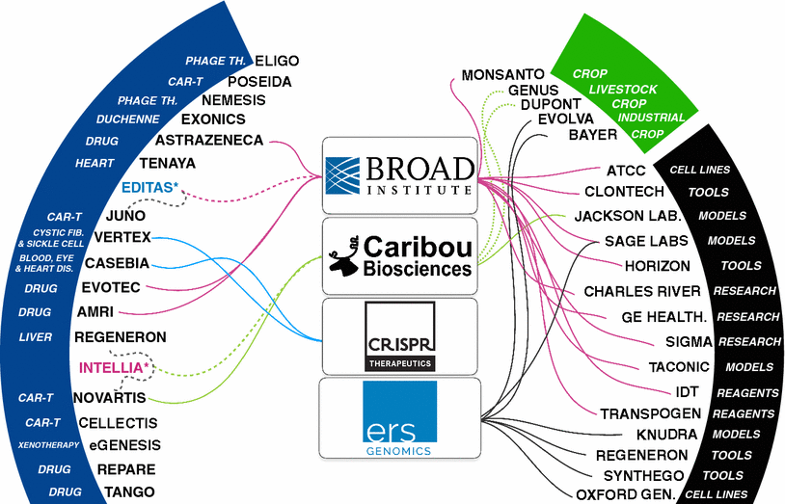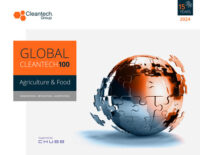Genetic Engineering for Crops and Food: Climate Adaptation, Resilience, and Food Security Through Innovation
Genetic engineering is not new
Genetic engineering of our food and crops has been going on for 10,000 years. Ever since we began selecting specific plants for traits of yield, hardiness, or another desirable feature, we have been genetically manipulating crops. More recently, biotechnology tools have enabled developers to engineer genetic information in plants to accelerate the development of key traits. Since the invention of new genetic tools such as CRISPR Cas-9 in 2012, this trend has accelerated with increasing sophistication leading to increased regulatory and consumer acceptance.
Genetic engineering is part of the solution
This is progress for two main reasons. Firstly, climate change is making it harder to produce the increase in yield required to feed a growing population without carving out more marginal land for crop growth. This pinch is felt most in the tropics where extreme weather events are most severe, and key specialty crops often support whole populations both nutritionally and financially. Secondly, the modern farming system is based on the availability and use of chemical fertilizers and protection systems. This has increased yield dramatically, but increasingly it harms long-term sustainability and has negative environmental impacts.
There are broadly three categories of traits that innovators are working on:

It is increasingly simple for genetic engineering in plants to reach the market as regulatory barriers are lowered and access to key genetic editing tools are subject to simple licensing agreements. Many of the innovators in this space were founded in the wake of the discovery of CRISPR-Cas 9 in 2012. The tool marks a step change in the ease and accuracy with which genetic information can be edited. Since then, there are four key companies and organizations that own patents for the technology, with a web of licensing agreements in place. Caribou Biosciences and the Broad Institute make up most licensing agreements in the agriculture and food space.

As for regulatory hurdles, the landscape has been improving for genetic engineering startups in recent years. The United States Department for Agriculture (USDA) set up the SECURE Rules in 2019 to simplify process for new genetically engineered products entering the market. In 2020, the first four products tested under this new scheme were greenlighted. In Europe, policy at the EU-level remains resistant to genetically engineered crops and foods with a 2018 judgment lumping new CRISPR edited products under the same categorization as pre-existing GMO regulation. However, some key innovators are based in Europe around research institutes, benefitting from highly skilled workforce and world class R&D facilities. In Wageningen, where Hudson River Biosciences are based, the University recently announced give away of licenses for 5 key CRISPR patents to form a research group to look at crop resistance to drought and disease. In the UK, where Tropic Biosciences and Phytoform Labs are based, Rothamsted Research, a pioneer of GM crop trials since the 1990s, has been granted permission by Defra to run a series of field trials of wheat that has been genome edited. Similar movements towards regulating products rather than processes are being seen in Australia and China, and in Japan where a gene edited tomato was green-lighted by the regulator MAFF in January this year.
The path to profit
The plant breeding market (using CRISPR gene editing technology) is projected to reach $14.6 billion by 2023, from $7.6 billion in 2018, at a CAGR of 13.95%. There are three key business models:
- R&D collaborations to develop specific genetic traits. Revenue is generated through project fees and royalties on sales.
- Licensing genetic editing tools, often as a platform-based service, to speed up customers’ in-house R&D.
- Developing new traits and seeds and commercializing them.
The first two are relatively CAPEX-light and therefore often more popular with venture investors. There is little commercialization risk, and the startup works on a trait or variety ‘to-order’. Once the capability to develop new traits and varieties at speed and with high accuracy has been proven with a successful product pipeline, it becomes easier to build this into a platform technology to help customers achieve results in their own seed and variety development. This in theory enables faster customer acquisition and should increase project delivery.
A startup may also look to develop traits in and varieties of high value crops and sell/license them directly to the grower, processors, manufacturer, or food brand. This often requires longer project lead times and involves some commercialization risk but captures more value than the collaborative R&D project model.
To try and capture a significant share of value a company may begin developing and selling its own proprietary seeds. This often puts them in competition with global agricultural giants and introduces a large share of commercialization risk that is inherent in agriculture (long field trials, sales cycles…).
Partners and/or customers in the value chain are valuable
If we take the recent history of Benson Hill, one can see each of these business models at play. The company began as an R&D co-developer with unique skills in genetic engineering and computational biology. It developed CROPOS, a platform to increase the rate at which development could occur to enable it to work with more customers. Now, despite assurances that they are not a seed company, they are selling a proprietary soybean with a high protein percentage and have a product pipeline under development. Newer business lines, such as Ingredients and Fresh, are looking to work with high margin food brands and processors to capture more value.
For startups working in genetic editing and engineering you don’t have to move too far down the value chain before you come up against the ‘thousand-pound gorillas’ of seed breeders and distributors. Therefore, many are looking to work with value chain verticals that capture the most value in food; manufacturers, processors, brands and retailers. Working on processing and quality traits has become a more lucrative pathway to profit but presents its own challenges such as supply chain integration, and a lower understanding of the seed and varieties market from partners not used to working so closely with suppliers.

Keep an eye on…
We will continue to see genetic engineering startups work more closely with food brands and processors in partnerships, but acquisition activity will come from incumbent seed development companies acquiring product pipelines and development capabilities. Expect to continue to see SPAC and high-value venture investments in companies developing proprietary seeds and products.
Also keep an eye on the increasing overlap between indoor farming and crop genetics. Since the founding of Unfold by Bayer and Temasek, which also recently invested in Pairwise Plants and Tropic Biosciences, we are seeing more activity in optimizing yield and processing cost to improve the economics for expensive growing systems by improving crop genetics.



